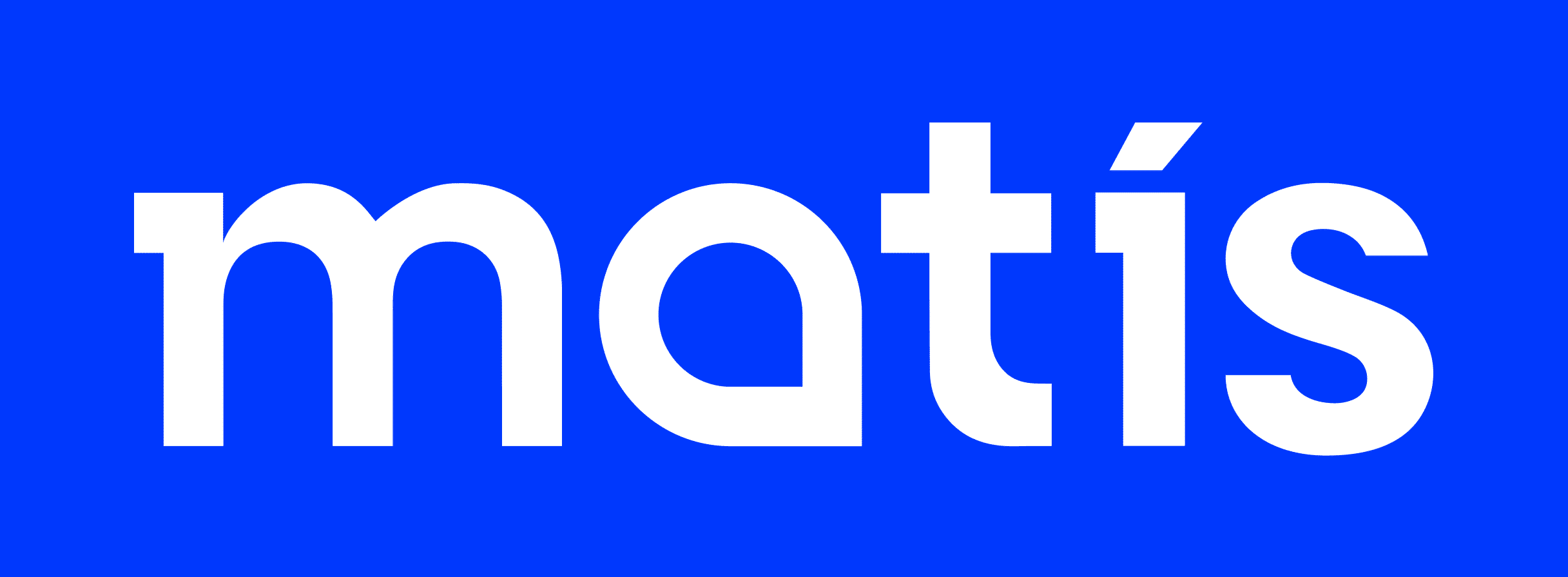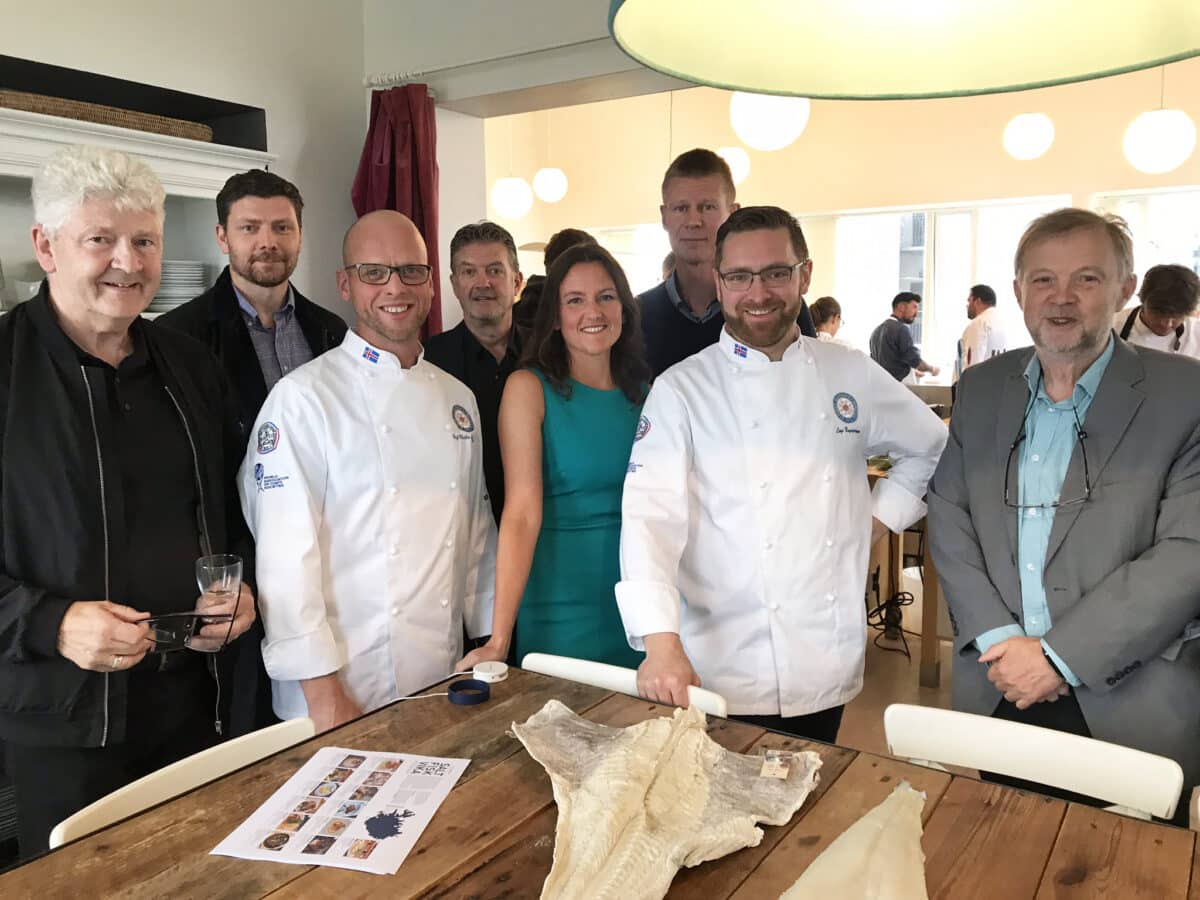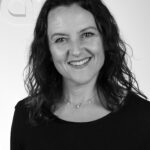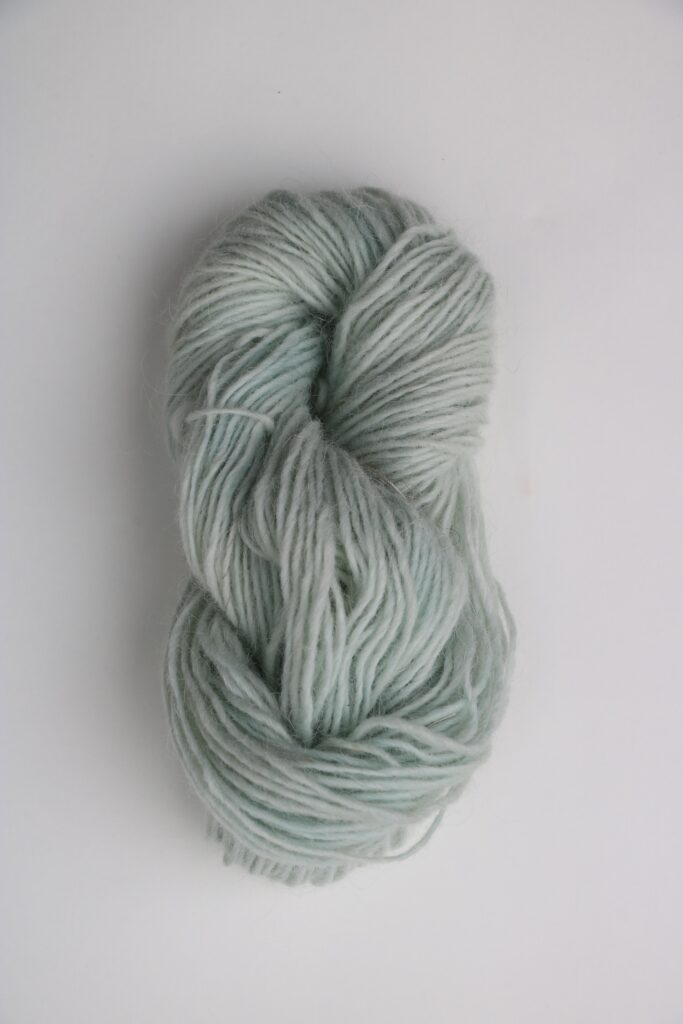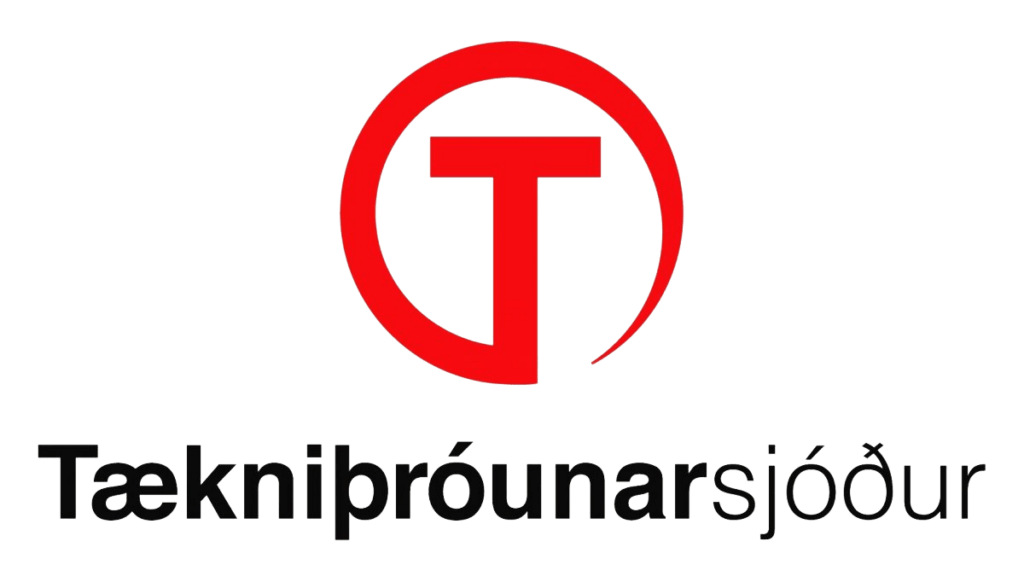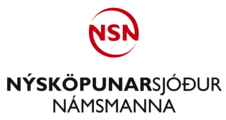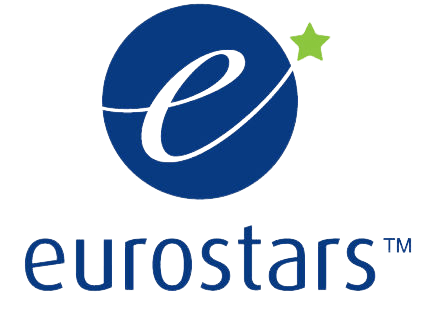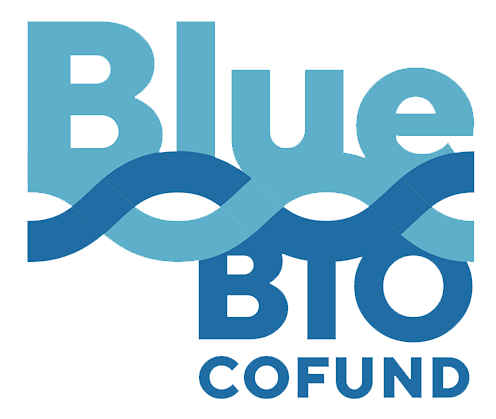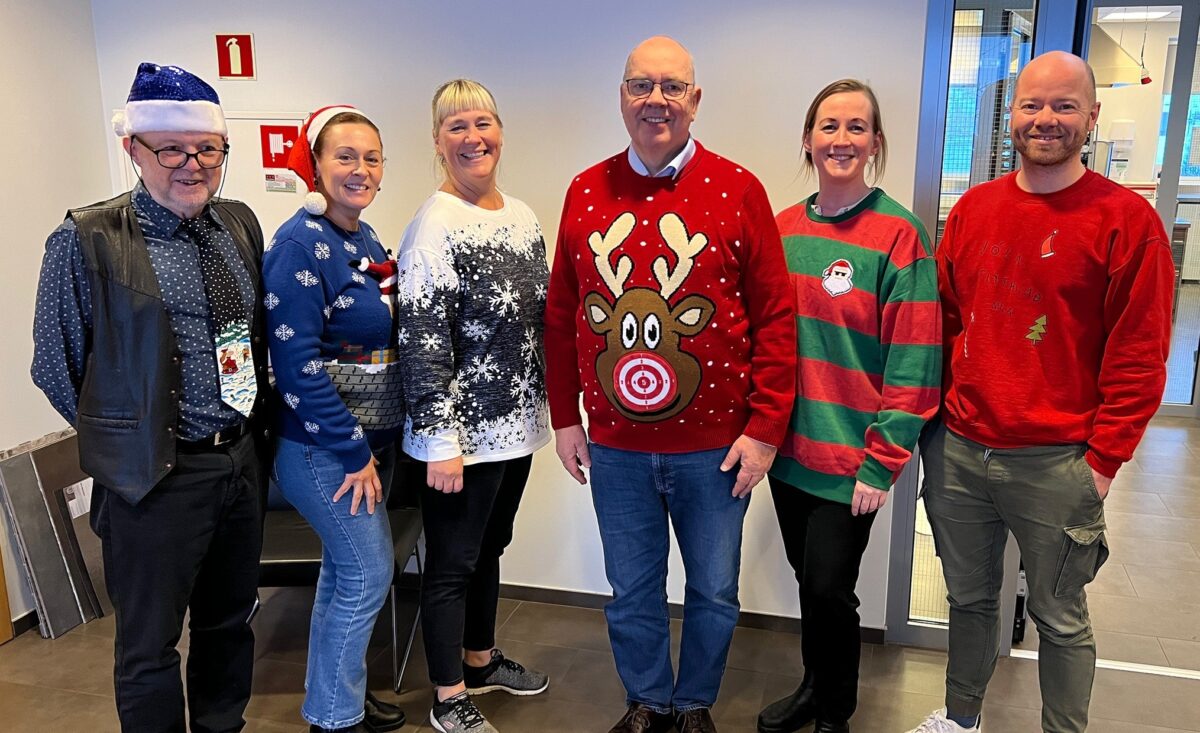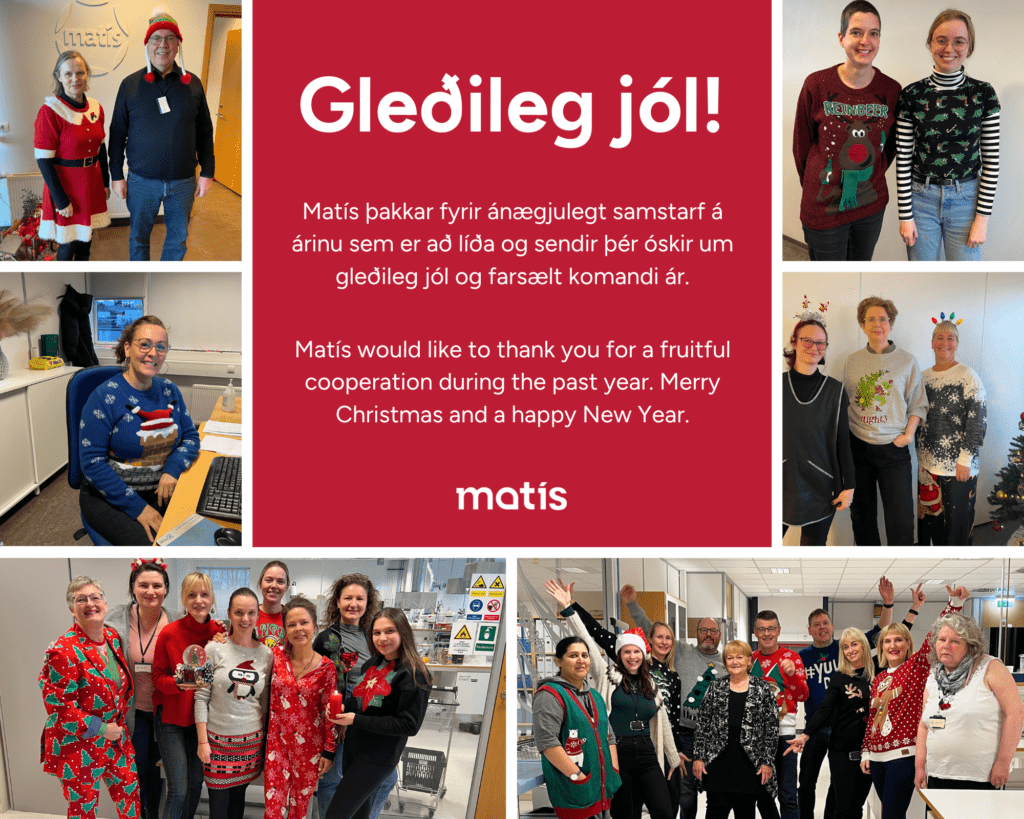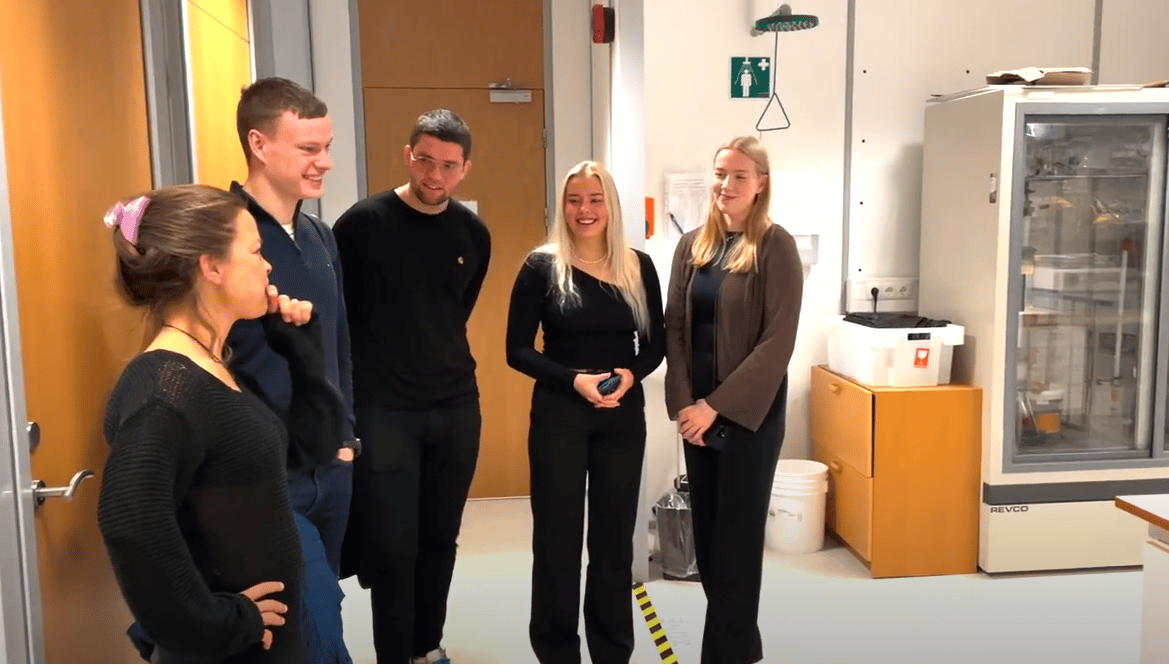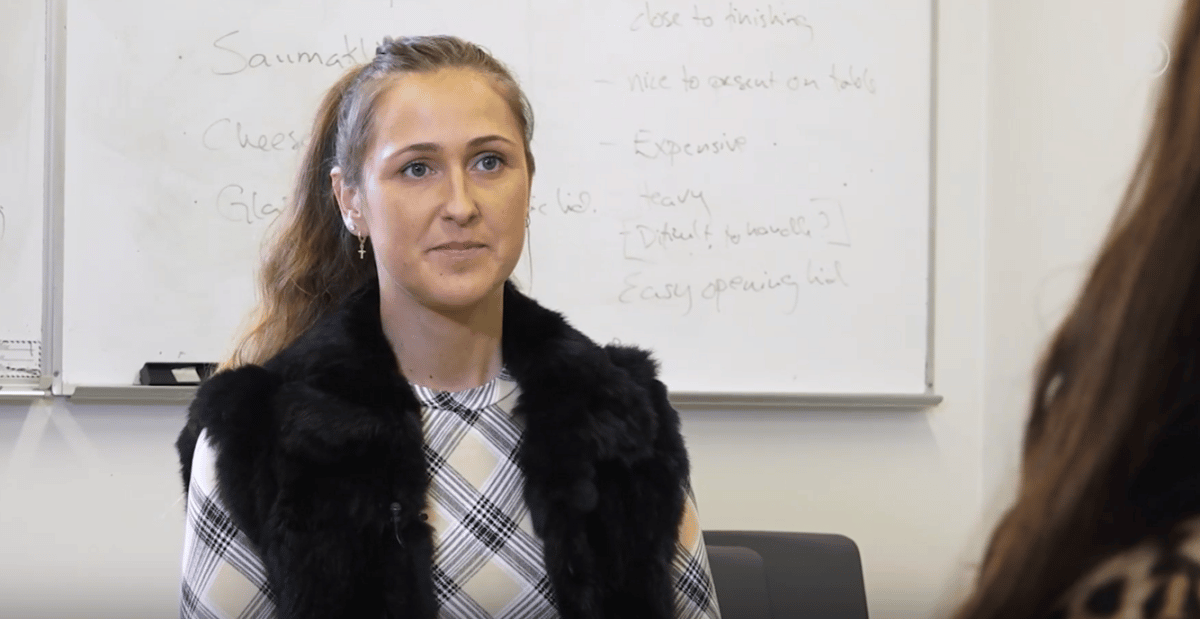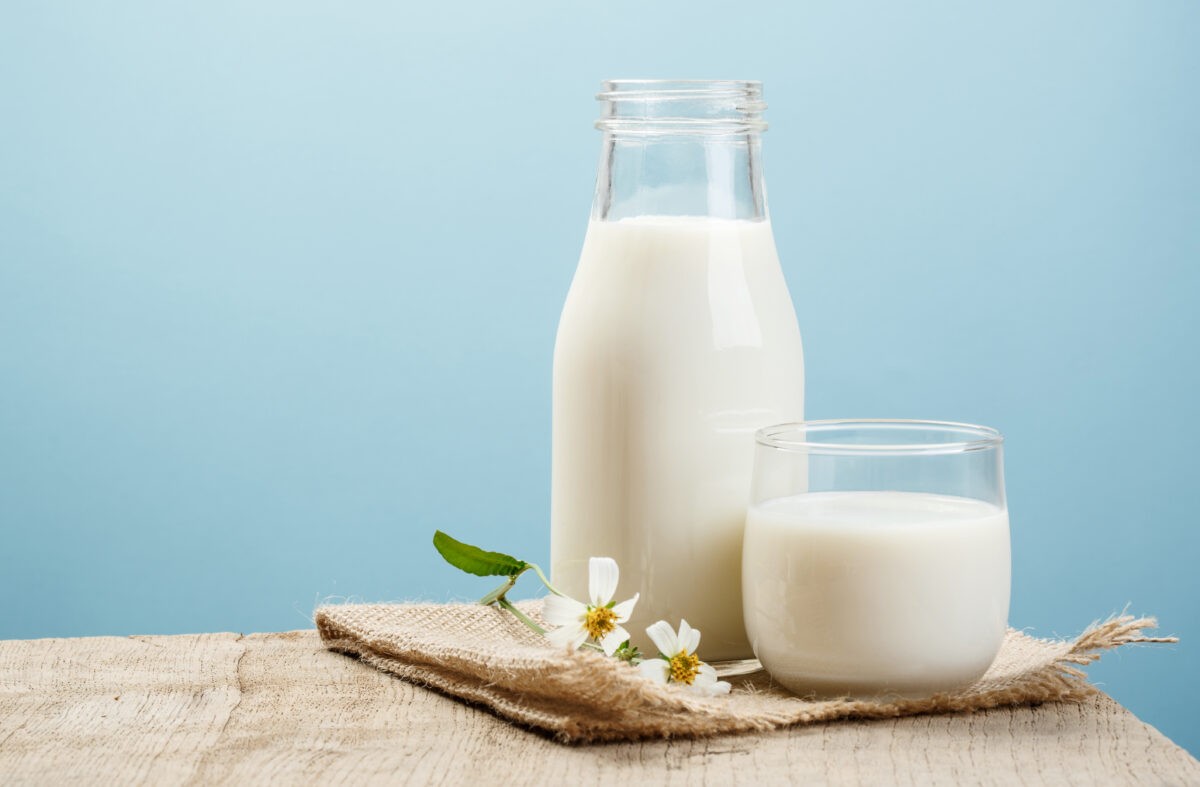Saltfiskur er nátengdur sögu okkar Íslendinga og menningu. Matís hefur undanfarin ár unnið að verkefnunum Lífið er Saltfiskur fyrr og nú og Saltfiskkræsingar til að styrkja stöðu saltfisksins og þróa nýja og bætta tilbúna rétti sem byggja á hefðbundnum saltfiski. Kolbrún Sveinsdóttir verkefnastjóri, ásamt fleiri sérfræðingum hjá Matís, hefur unnið ötullega að verkefnunum og segir okkur hér allt frá gangi mála.
Alvöru saltfiskur ætti í raun að vera á pari við það sem Parmaskinka er Ítölum
Löng hefð er fyrir vinnslu saltfisks hér á landi, og hefur saltfiskurinn verið samofinn sögu Íslendinga og matarmenningu í árhundruð. Í dag er útflutningur á fullsöltuðum fiskafurðum á meðal verðmætustu útflutningsvara okkar. Mestur hluti útflutts saltfisks fer til landa eins og Spánar, Portúgals, Ítalíu, Grikklands, Frakklands og Brasilíu en í þessum löndum hefur skapast löng og mikil hefð fyrir neyslu saltfisks sem lúxusvöru á veitingarhúsum og eins hjá hinum venjulega neytenda þar úti.
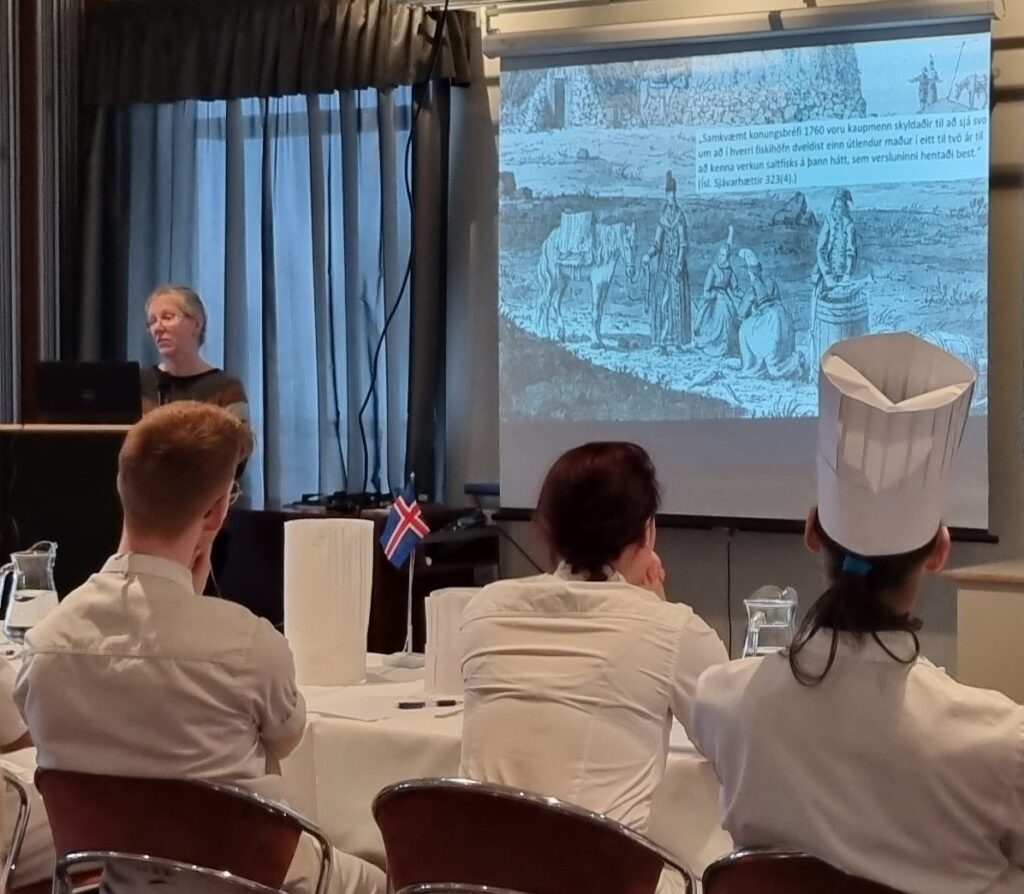
„Á sama tíma er varla hægt að fá alvöru saltfisk hér heima, hvort heldur sem væri í fiskbúðum, matvöruverslunum eða veitingahúsum. Saltaður fiskur er jafnvel seldur sem saltfiskur. Okkur fannst afar mikilvægt að skapa þessari alvöru lúxusvöru hærri sess á Íslandi, Ísland ætti eiginlega að vera Mekka saltfisksins,“ útskýrir Kolbrún.
„Þá er ekki gáfulegt að bjóða upp á fisk, sem ekki er raunverulegur saltfiskur. Það þarf að greina á milli þess sem sannarlega telst saltfiskur annars vegar og saltaður fiskur hins vegar,“ segir Kolbrún. Saltaður fiskur, yfirleitt léttsaltaður eða nætursaltaður hefur ekki sömu verkunnar einkenni og saltfiskur, sem er fullverkaður með salti og saltpækli og þá þurrsaltaður jafnvel vikum saman, áður en hann er útvatnaður, sem gefur þessari vöru einstaka eiginleika á borð við einkennandi verkunnarbragð og stinna áferð. Alvöru saltfiskur ætti í raun að vera á pari við það sem Parmaskinka er Ítölum, að mati Kolbrúnar.
„Annað sem okkur langaði að laga varðandi ímynd saltfisks, var sú mýta, að saltfiskur eigi að vera saltur. Við vildum koma því til skila að saltfiskur, sem er rétt útvatnaður, eigi ekki að vera brimsaltur.“
„Málið er nefnilega, að eftir útvötnun ætti saltmagn að vera á pari við saltmagn í fjölda matvæla sem margir neyta, oft daglega, eins og algeng morgunkorn á borð við kornflex eða Cheerios.“
„Margir réttir, á borð við pizzur og hakkrétti innihalda gjarnan sambærilegt saltmagn, eða töluvert hærra, eins og farsbollur, soðna skinku og hangikjöt, samkvæmt gagnagrunninum ÍSGEM,“ segir Kolbrún.
Mikil þekking til á verkun, útvötnun, geymsluþoli og gæðum
Matís hefur unnið ötullega að rannsóknaverkefnum um saltfisk, og hér hefur orðið til gríðarleg þekking á verkun, útvötnun, geymsluþoli og gæðum. Þrír doktornemar hafa stundað fræðilega rannsóknir í samráði við sjávarútvegsfyrirtæki á öllu verkunarferlinu og markmið þeirrar vinnu var öðlast dýpri þekkingu á eðlis- og efniseiginleikum hráefnis og lokaafurðar til að bæta afkomu greinarinnar og um leið að geta framleitt afurð með rétt gæði fyrir kröfuharða markaði. Þeirri þekkingu hefur verið miðlað með ýmsu móti til hagaðila, ekki síst saltfiskframleiðenda.
„Hins vegar var þörf á að efla virðiskeðjuna innanlands í heild, og kynna saltfiskinn betur sem þá sælkeraafurð sem hann er,“ segir Kolbrún.
Meginmarkmið verkefnisins Lífið er saltfiskur fyrr og nú, sem styrkt var af AG-Fisk, var að auka þekkingu á sjávarfangi, eins og saltfiski, og stuðla þannig að aukinni virðingu og þannig auknu virði þess. Í verkefninu voru skoðaðar og kynntar hefðir, nýjungar, vinnsluaðferðir, eiginleikar og gæði saltfisks. Haldnar voru vinnustofur og fundir með matreiðslumönnum, ásamt kynningum, sem fram fóru á Íslandi og öðrum norðurlöndum í samvinnu við Íslandsstofu, markaðsfyrirtæki og saltfiskframleiðendur.
Vel heppnuð vinnustofa um saltfisk
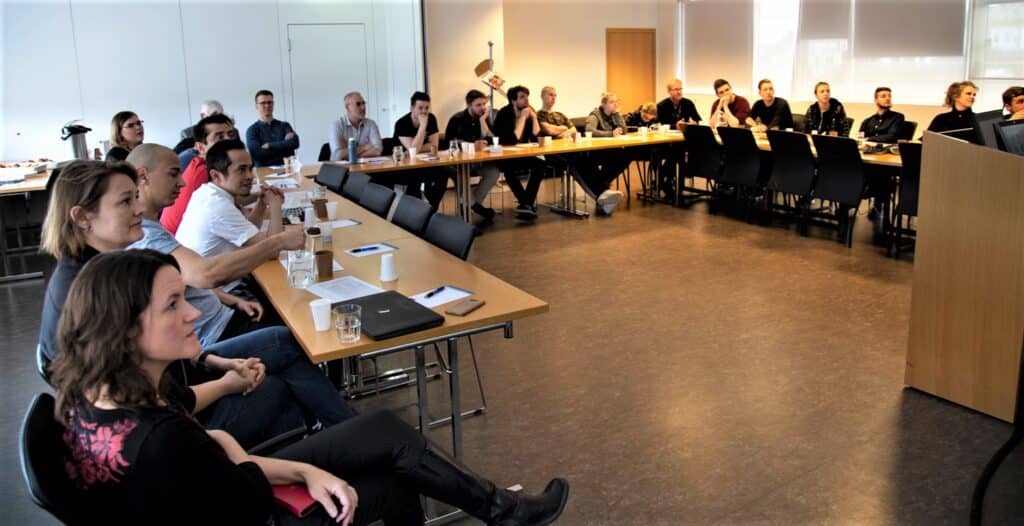
Haldin var vinnustofa um saltfisk á vegum Matís þann 30. apríl 2019. Vinnustofuna sóttu saltfiskframleiðendur, matreiðslumeistarar og nemar við matreiðslunám Menntaskólans í Kópavogi (MK). Markmið vinnustofunnar var að gera saltfiski hærra undir höfði, kynnast eiginleikum saltfisks, sögu og menningu, meta stöðuna eins og hún er, velta upp tækifærum og hindrunum og skiptast á skoðunum og reynslu af saltfisk.
Niðurstöður vinnustofunnar sýndu að þátttakendur fundu verulegan mun á útvötnuðum saltfiski og léttsöltuðum fiski og voru sammála um að það þarf að kenna fólki hvernig saltfiskur er ólíkur ferskum fiski.
Matreiðslunemar sem þátt tóku töldu tækifæri saltfisks eru ærin og þeim fannst saltfiskur skemmtilegt hráefni að vinna með. Samhljómur var um að það vantaði vitundarvakningu hjá matreiðslumönnum og almenningi um það að saltfiskur eigi ekki að vera mjög saltur. Fiskur á veitingastöðum og fiskbúðum væri oft of saltur. „Það gæti ýtt undir að neytendur veigri sér við að kaupa saltfisk en velji frekar léttsaltaðan eða nætursaltaðan fisk þar sem saltbragð er jafnara,“ útskýrir Kolbrún.
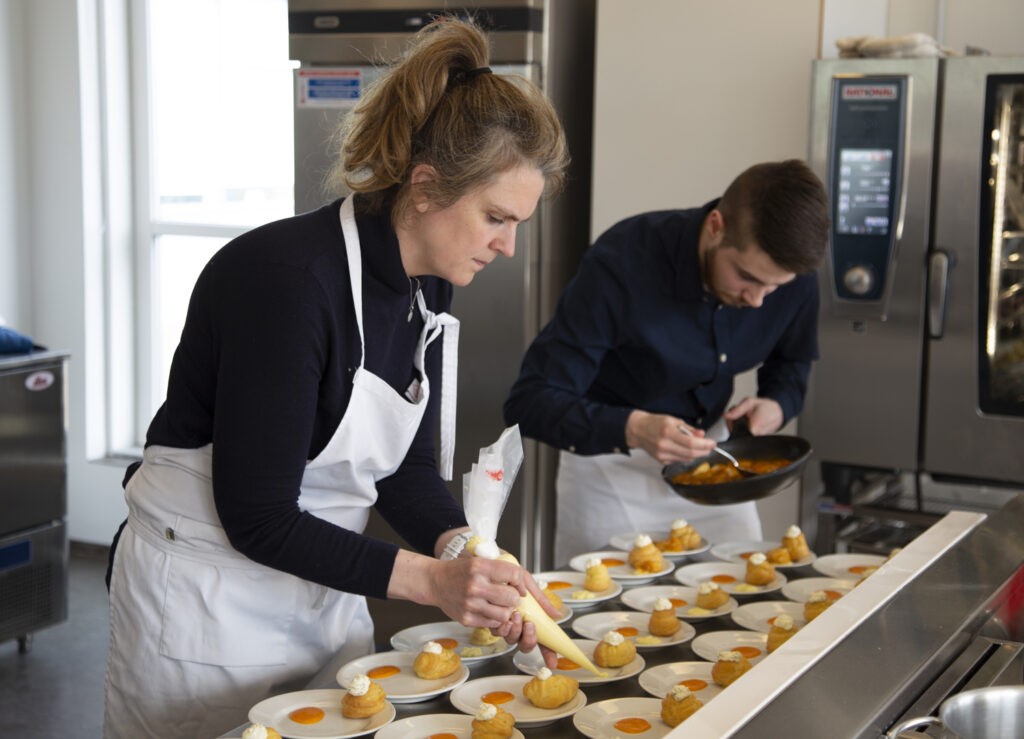
Saltfiskvika sem sló í gegn
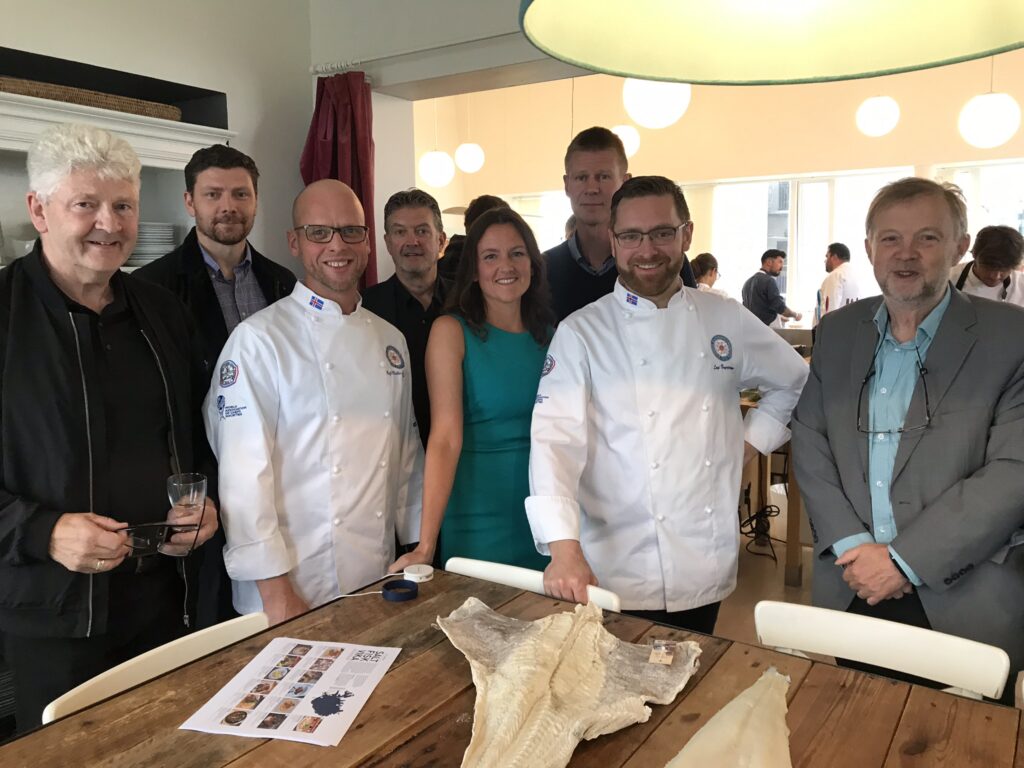
Í kjölfar vinnustofunnar var ákveðið að ráðast í ímyndarátak fyrir saltfisk sem sælkerafæði, viku viðburð sem bar heitið „Saltfiskvika“. Helsta markmið Saltfiskvikunnar var að gera saltfisknum hærra undir höfði hérlendis og kynna óþrjótandi möguleika, gæði og áhugaverða sögu saltfisks fyrir íslenskum og erlendum gestum. Leiðbeiningar um meðhöndlun og útvötnun voru útbúnar og veitingastaðir og mötuneyti hvött til þátttöku.
Til að meta upplifun þeirra sem tóku þátt í saltfiskvikunni, var þeim sendur spurningalisti. Almenn ánægja mældist meðal þeirra 13 veitingastaða og 10 mötuneyta sem buðu upp á saltfisk í Saltfiskviku. Hlutfallslega margir pöntuðu saltfiskrétt á veitingastöðum og saltfiskréttum var vel tekið af gestum. Helstu hvataþættir þátttöku í Saltfiskviku voru margvíslegar, en helst mætti þar nefna skemmtilega tilbreytingu, gaman væri að hitta erlenda kokka og að viðburðurinn hafi góð áhrif á fjölbreytni og sköpunargleði á vinnustaðnum, sem og að það væri mikilvægt að kynna hráefnið bæði fyrir Íslendingum og erlendum ferðamönnum.
„Flestir þátttakenda sem hafa sjaldan eða aldrei boðið upp á saltfisk telja líklegt að þeir muni hafa hann oftar á boðstólum eftir saltfiskvikuna,“ segir Kolbrún.
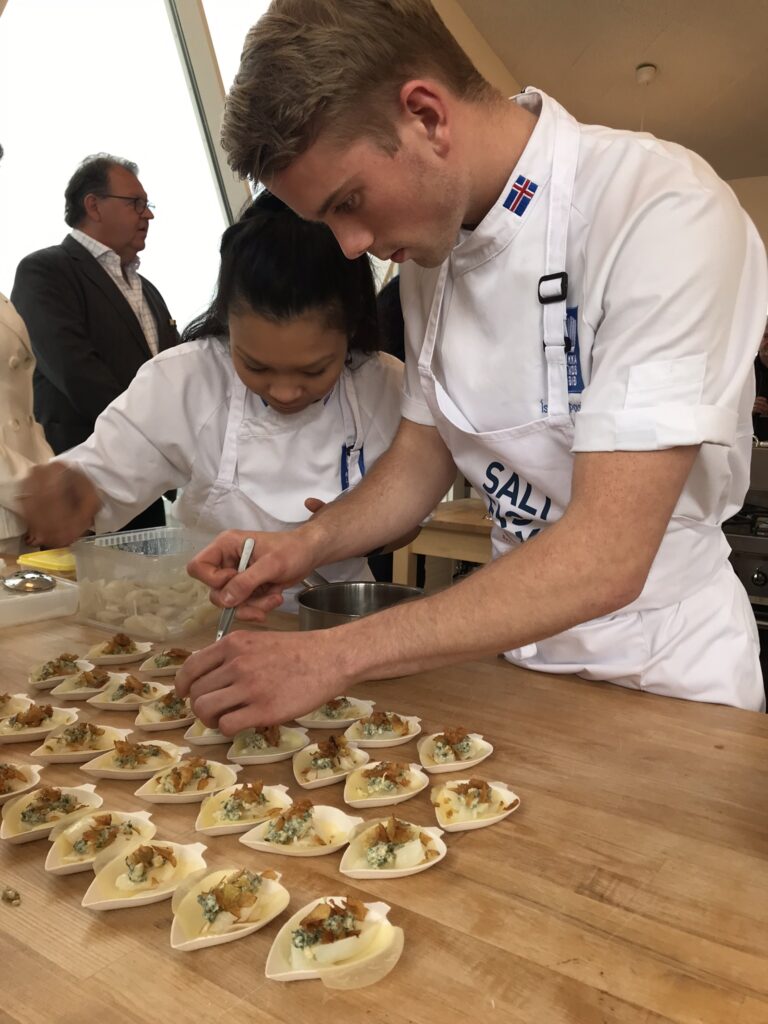
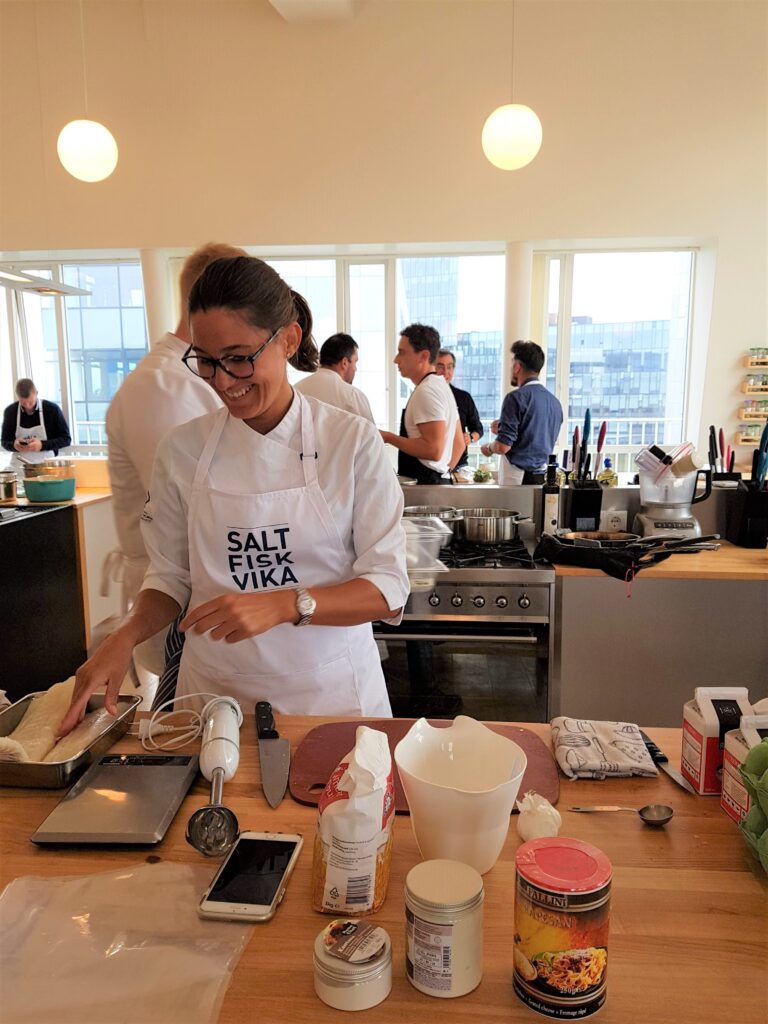
Áhrifin láta ekki á sér standa
Þar sem verkefninu var ætlað að stuðla að bættir ímynd saltfisks og styðja jafnframt við aukna þekkingu matreiðslufólks, á meðferð, gæðum og möguleikum saltfisks almennt, mætti segja að saltfiskframleiðendur og matreiðslufólk séu beinir hagaðilar. Einnig neytendur, bæði innlendir og erlendir, sem bera hag af því heilsulega að borða rétt útvatnaðan saltfisk, sem ekki er of saltur, auk þess að hafa fjölbreyttara úrval sælkerarétta sem dekra við bragðlauka og matarupplifun almennt.
Þrátt fyrir útgáfu Saltfiskbókarinnar, hefur saltfiskur orðið útundan í kennslu matreiðslunema. Verkefnið hefur komið með nýja áherslu í fræðsluefni og um leið breytt þeirri stöðu til batnaðar, og eftir að vinnustofan innan verkefnisins var haldin, hefur MK nýtt það efni sem þar var kynnt, til kennslu í skólanum. Því má ætla að upprennandi og nýir matreiðslumeistarar kunni góð skil á saltfiski sem mun skila sér í veitinga og matarflóruna á Íslandi til framtíðar.
Frábærir og meira úrval af saltfiskréttum hafa skilað sér á matseðla veitingastaða, og nefna má sem dæmi að hjá Einsa Kalda í Vestmanneyjum, er saltfiskréttur þeirra einn af vinsælustu réttunum frá því að Saltfiskvikan var haldin. Þar hefur skapast samvinnugrundvöllur saltfiskvinnslunnar í Vestmannaeyjum (Vinnslustöðin í Vestmanneyjum) og Einsa Kalda við útvötnun á fullverkuðum saltfiski.
„Í magni talið, selur þessi eini veitingastaður nú meira af útvötnuðum fullverkuðum saltfiski (í rétti af matseðli), en eina matvöruverslunarkeðjan á Íslandi sem selur útvatnaðan fullverkaðan saltfisk, á ársgrundvelli,“ útskýrir Kolbrún.
Framhaldsverkefnið Saltfiskkræsingar

Verkefninu Lífið er saltfiskur fyrr og nú er lokið. Þó að það verkefni hafi skilað góðum árangri, þarf meira til þess að koma saltfiski almennilega á kortið hjá okkur Íslendingum, sem sælkerafæða, með alla sína sögu, menningu og sérkenni. Til að fylgja þessu eftir var sótt um framhaldsverkefni, Saltfiskkræsingar, sem hófst núna 2022, en það hlaut einnig styrk frá AG Fisk. Verkefnið snýst mikið um miðlun þekkingar, og í haust var haldin vinnustofa í húsakynnum Menntaskólans í Kópavogi, í samstarfi Matís, Menntaskólans í Kópavogi (MK), Gríms Kokks, Klúbbs Matreiðslumeistara og íslenskra saltfiskframleiðenda. Niðurstöður þeirrar vinnustofu sýndu að það virðast endalaus tækifæri og sóknarfæri fyrir saltfiskinn, en að við þurfum hins vegar að greiða betur leið saltfisksins á íslenskan markað, og að því miða næstu skref innan Saltfiskkræsinga.
Viltu vita meira?
Verkefnasíða: Lífið er saltfiskur fyrr og nú
Verkefnasíða: Saltfiskkræsingar
Skýrsla: Hvað er saltfiskur vinnustofa 2022
Verkefnið var unnið í samstarfi Matís við Íslandsstofu, Klúbb matreiðslumeistara, Menntaskólann í Kópavogi, Íslenska saltfiskframleiðendur og fleiri. Að verkefninu komu einnig norrænir samstarfsaðilar í Noregi og Færeyjum. Verkefnið hlaut styrk frá AG-Fisk á vegum Norrænu ráðherranefndarinnar og AVS Rannsóknasjóði.
